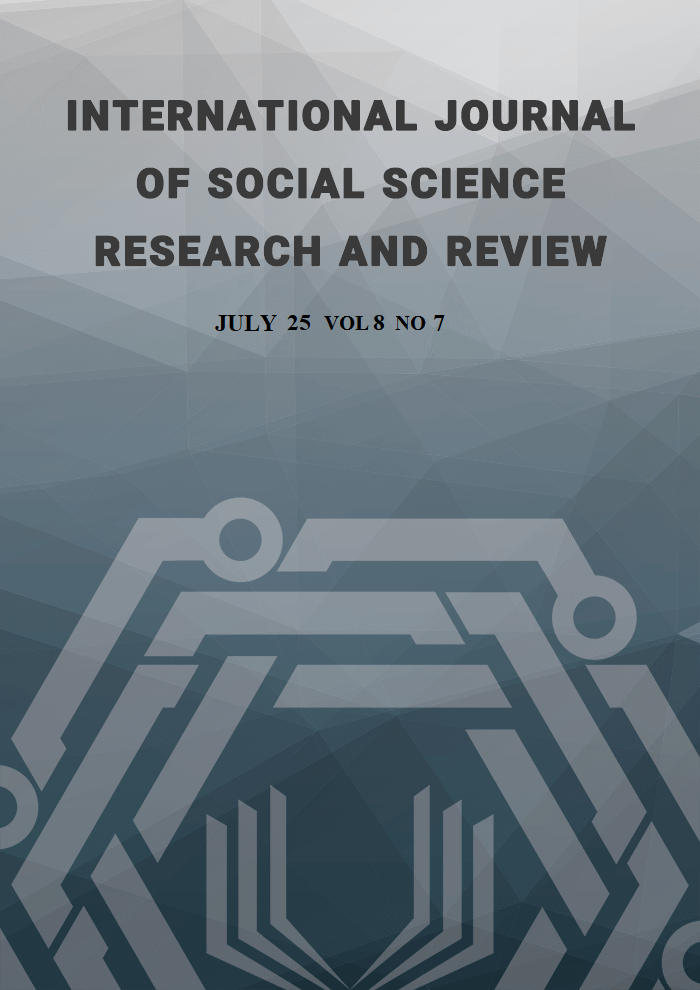A Comparative Study of Arabic Language Education in Indonesia, Thailand, China, and South Korea
Abstract
Arabic language education in Asia exhibits significant variation shaped by historical, religious, socio-political, and economic factors. This comparative study examines Arabic language teaching in Indonesia, Thailand, China, and South Korea, focusing on four key dimensions: historical evolution, institutional frameworks, pedagogical methodologies, and prevailing challenges. Employing a qualitative comparative research design, the study synthesizes policy documents, academic literature, and institutional reports to elucidate national approaches and educational outcomes. Findings reveal that Indonesia and Thailand emphasize religious motivations with Arabic instruction embedded primarily in Islamic educational settings, whereas China and South Korea adopt a more secular and pragmatic orientation, linking Arabic proficiency to diplomatic, economic, and academic objectives. Despite divergent contexts, all countries face challenges, including shortages of qualified instructors, limited curricular standardization, and insufficient exposure to native Arabic language environments. The study underscores the need for curriculum development balancing classical and modern Arabic, enhanced teacher training, and expanded international collaboration. This research contributes to understanding Arabic language education in diverse Asian contexts and offers recommendations to support effective pedagogical strategies and policy reforms.
References
Al Shlowiy, A. S. (2022). Language, religion, and communication: The case of Islam and Arabic in the Asia-Pacific. Journal of Asian Pacific Communication, 32(2), 198–213. https://doi.org/10.1075/japc.00040.shl.
Alwasilah, A. C. (2013). Pokoknya Kualitatif: Dasar-dasar Merancang dan Melakukan Penelitian Kualitatif. Pustaka Jaya.
Aminullahi, M. (2021). Arabic Language Teaching in the Islamic Schools of Southern Thailand: Challenges and Prospects. Al-Ta Lim Journal, 28(1), 40–51. https://doi.org/10.15548/jt.v28i1.667.
Azra, A. (2004). Jaringan Ulama Timur Tenggah Kepulauan Nusantara Abad XVII dan XVIII; Akar Pembaharuan Islam di Indonesia. Prenada.
Berglund, J., & Gent, B. (2019). Qur’anic education and non-confessional RE: An intercultural perspective. Intercultural Education, 30(3), 323–334. https://doi.org/10.1080/14675986.2018.1539305.
Braun, V., & Clarke, V. (2019). Reflecting on reflexive thematic analysis. Qualitative Research in Sport, Exercise and Health, 11(4), 589–597. https://doi.org/10.1080/2159676X.2019.1628806.
Bray, M., Adamson, B., & Mason, M. (Eds.). (2014). Comparative Education Research: Approaches and Methods (2nd ed.). Springer. https://doi.org/10.1007/978-3-319-11927-8.
Bruinessen, M. van. (1990). Kitab Kuning: Books in Arabic Script Used in the Pesantren Milieu. Bijdragen Tot de Taal-, Land- En Volkenkunde, 146(2/3), 226–269. https://doi.org/10.1163/22134379-90003203.
Ellis, R. (2008). The Study of Second Language Acquisition (2nd ed.). Oxford University Press.
Hackett, C., & McClendon, D. (2017). Christians remain world’s largest religious group, but they are declining in Europe. https://www.pewresearch.org/religion/2017/04/05/christians-remain-worlds-largest-religious-group-but-they-are-declining-in-europe/.
Hayisama-Ae, M., Sadeeh, S., & Muhammed, N. (2016). The Development of Arabic Language Curriculum in Southern Thailand’s Islamic Schools. Arabiyat: Jurnal Pendidikan Bahasa Arab Dan Kebahasaaraban, 3(2), 185–200. https://doi.org/10.15408/a.v3i2.4426.
He-bin, M. A., Qiong, W. J., & Li-hua, L. I. U. (2021). Development of Arabic Language Teaching in China: History, Present, and Challenges. International Journal of Arabic-English Studies, 21(1), 45–66. https://ijaes.net/article/view/39313.
Hefner, R. W. (2009). Making Modern Muslims: The Politics of Islamic Education in Southeast Asia. University of Hawaii Press.
Kim, K. H., & Piper, B. (2019). The Rise of Middle Eastern Studies and Arabic Language Education in South Korea: Institutions, Policy, and Pedagogy. Asian Journal of Middle Eastern and Islamic Studies, 13(2), 227–242. https://doi.org/10.1080/25765949.2019.1615925.
Liow, J. C. (2010). Islamic Education in Thailand: Negotiating Control and Identity. Journal of Southeast Asian Studies, 41(2), 247–267. https://doi.org/10.1017/S0022463410000137.
Ministry of Religious Affairs (MORA). (2020). Kurikulum Bahasa Arab Madrasah: Standar Isi dan Kompetensi Lulusan. MORA.
MoRA. (2022, December). Kemenag Terbitkan 40 Izin Operasional Pendidikan Diniyah Formal dan Muadalah. https://kemenag.go.id/read/kemenag-terbitkan-40-izin-operasional-pendidikan-diniyah-formal-dan-muadalah.
Mukhtar, H. (2025, May). Muslim Population By Country 2025. IslamiCity. https://www.islamicity.org/104639/muslim-population-by-country-2025.
Muslih, M., & Kholis, N. (2021). Telaah Komparatif Kurikulum Lembaga Pendidikan Islam di Singapura dan Thailand. Jurnal Kariman, 9(2), Article 2. https://doi.org/10.52185/kariman.v9i2.191.
PPIM UIN Jakarta. (2021). Laporan Penelitian: Kompetensi Guru Bahasa Arab di Indonesia. Pusat Pengkajian Islam dan Masyarakat, UIN Syarif Hidayatullah.
Purwanti, D. (2024). The Role of Arabic Language in Islamic Higher Education in Indonesia. Al-Turas: Jurnal Studi Keislaman, 10(1), 14–27. https://doi.org/10.36840/al-turas.v10i1.501.
UKBA: Uji Kompetensi Bahasa Arab. (2022). Laporan Nasional Hasil Uji Kompetensi Bahasa Arab Madrasah 2022. MORA.
World Population Review. (2025, May). Muslim Majority Countries 2025. World Population Review. https://worldpopulationreview.com/country-rankings/muslim-majority-countries.
Zhao, S. (2016). Arabic Language Education in Chinese Universities: Development, Challenges, and Strategies. Journal of Language Policy and Planning, 8(3), 233–251. https://doi.org/10.1080/14664208.2016.1194521.
Copyright (c) 2025 Vacharee Dedduang, Nur Kholis

This work is licensed under a Creative Commons Attribution-NonCommercial-NoDerivatives 4.0 International License.
Copyright for this article is retained by the author(s), with first publication rights granted to the journal. This is an open-access article distributed under the terms and conditions of the Creative Commons Attribution license (https://creativecommons.org/licenses/by-nc-nd/4.0/).





